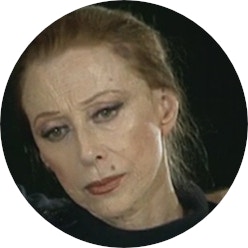
Maya Plisetskaya
November 20, 1925 - Moscow — May 2, 2015 - Munich, Germany
About
Her impressive technical mastery, the wonderful sense of drama she developed thanks to the grace and suppleness of her body, her delicacy and the lightness of her jumps helped Maya Plisetskaya develop a unique style that marked the art of ballet during the 20th century.
The prima ballerina assoluta of the Bolshoi Theatre, an unequalled dancer, ballet master and choreographer, Maya Plisetskaya was one of the most wonderful stars of the former Soviet Union, a ballet legend of the 20th century admired all around the world. From her debuts at the Boshoï Theatre aged only 11 in The Sleeping Beauty to her last performance as a ballerina aged 70 in Ave Maya, a ballet that Maurice Béjart dedicated to her, Maya Plisetskaya had an exceptional career.
Born in 1925 in a very tense context after the Bolshevist Revolution, Maya Plisetskaya has been separated very young from her parents – her father was executed under Stalin in 1938 and her mother, who was considered an "enemy of the people", has been deported for many years. She took her first dance lessons under the care of her uncle Assaf Messerer, the accredited ballet master of the Bolshoi Theatre. At the Bolshoi Ballet school which she enters in 1934, she studied under Pavel Gerdt and Maria Leonteva, then she graduated from the Moscow Choreography School in 1945. Afterwards she joined the Bolshoi Ballet company with which danced until 1990.
After her debuts in Les Sylphides in 1943, the most important roles she performed were Masha in The Nutcracker, Myrtha in Giselle, Raymonda in Glazounov's ballet of the same name in 1945, Odette-Odilia in Swan Lake starting from 1947 that will be highly acclaimed and performed more than 800 times all around the world, Zarema in The Fountain of Bakhchisarai, the leading role in Chabukiani's Laurencia, Aurora in The Sleeping Beauty, Juliet in Romeo and Juliet, Phrygia in Khachaturian's Spartacus and Anna Karenina which she made the choreography and danced the leading role.
In 1960 Maya Plisetskaya was appointed Star of the Bolshoi Theatre and then in 1962 prima ballerina assoluta, a rare title usually dedicated to the greatest dancers of their generation. With Galina Ulanova to whom she succeeded at the Bolshoi Theatre, they were the only two Soviet dancers to receive this title of honor. She greatly defended modern ballet, in particular in introducing choreographies by Roland Petit and Maurice Béjart.
During Cold War, when she was finally allowed to leave Soviet Union, her tours with the Bolshoi Ballet company helped her to become world-renowned. Ironically, she was used by the Soviet government as a cultural ambassadress abroad whereas in Soviet Union she had to face the government's continuous oppression due to her reputation as "the daughter of an enemy of the people".
Maya Plisetskaya left to the ballet a remarkable heritage, according to her high technical level and her brilliant dramatic art. She remains an ideal for dancers and choreographers from all around the world and has been qualified by Maurice Béjart himself as "dance's last living legend".

